





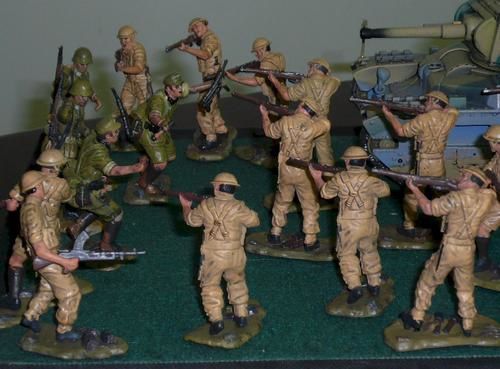
![]()
Explanation of British Regiments
Designations of British units: Each British Regiment contained 4 or 5 Battalions, or even as many as 12. Unlike the US divisions, the British Regiment was identified only by its name-- not a number-- and the battalions of a regiment did not serve in the same division. Therefore, one battalion of one regiment might be sent to Italy, another to Pacific and another to France. I presume the purpose was ensuring each division had diversified units so as to utilize combined arms. Another reason is that regiments generally raised troops from one local area and if that regiment received heavy casualties, then that would have a devastating impact on the local community. This was a lesson that was learned in World War 1.
Prior to WW2, a regiment would consist of 3 battalions: one used for home defense, one deployed overseas and one 'home' unit that provided a a flow of trained replacements. Regiments that existed before 1939, generally consisted of 1 or 2 regular battalions and 2 or 3 Territorial Army battalions for training and replenishment. As the requirement for more divisions grew, the TA battalions duplicated themselves, thus creating a 1/6 and 2/6 battalion designation. These new battalions were group together to form new TA brigades and new divisions and fought together.
Towards the end of the war, the British converted to a system similar to the Americans that trained all replacements and assigned them to units as needed.
Each Regiment was identified by their name. However, most references will have a number preceding the name that identifies the specific battalion of that regiment.
Examples:
6 Grenadier Guards stands for the 6th Battalion of the Grenadier Guards.
40 Royal Tank Regiment is the 40th Regiment, as there were many tank regiments.
1/6 West Surrey is the 1st Battalion of the territorial West Surrey Regiment.
The second battalion of the Territorial Army was designated as 2/6th West Surrey.
The British preferred to designate the corps in Arabic numbers, whereas the Americans used Roman numerals. Thus sometimes you will see it written as "X Corps" and other times as "10th Corps", depending whether the source is American or British. The British divisions and some brigades were issued shoulder patches.
The division adopted a name or title that described their heritage or origin; i.e., North Midland Division or Highland Division. The British regiments did not have shoulder patches.
Each regiment and branch (such as Engineers) had a distinctive cap badge and, in some cases, a shoulder title either of metal or cloth strip.
![]()

The Eighth Army
It was a British formation, and was always commanded by British generals. Its personnel came from throughout the British Empire and Commonwealth, complemented by units composed of exiles from Nazi-occupied Europe. Subordinate units came from Australia, British India, Canada, Free French Forces, Greece, New Zealand, Poland, Rhodesia, South Africa and the United Kingdom.
Was one of the best-known formations in World War II, fighting in the North African and Italian campaigns.
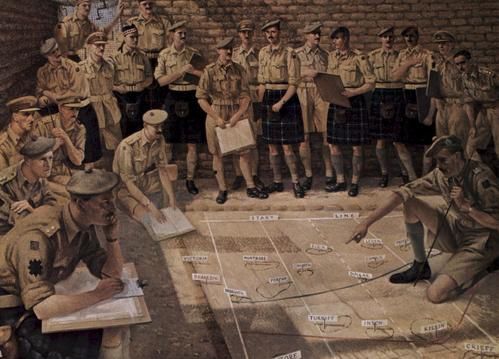
North Africa
On 26 November the Commander-in-Chief Middle East Command, General Sir Claude Auchinleck, replaced Cunningham with Major-General Neil Ritchie, following disagreements between Auchinleck and Cunningham. Despite achieving a number of tactical successes, Rommel was forced to concede Tobruk and was pushed back to El Agheila by the end of 1941. In February 1942 Rommel had regrouped his forces sufficiently to push the over-extended Eighth Army back to the Gazala line, just west of Tobruk. Both sides commenced a period of building their strength to launch new offensives but it was Rommel who took the initiative first, forcing Eighth Army from the Gazala position.
Ritchie proved unable to halt Rommel and was replaced when Auchinleck himself took direct command of the army. The Panzer Army Afrika were eventually stopped by Auchinleck at the First battle of El Alamein. Auchinleck, wishing to pause and regroup Eighth Army which had expended a lot of its strength in halting Rommel, came under intense political pressure from Winston Churchill to strike back immediately. However, he proved unable to build on his success at Alamein and was replaced as Commander-in-Chief Middle-East in August 1942 by General Alexander and as Eighth Army commander by Lieutenant-General William Gott. Gott was killed in an air crash on his way to take up his command and so Lieutenant-General Bernard Montgomery was appointed in his place. Alexander and Montgomery were able to resist the pressure from Churchill, building the army's strength and adding a pursuit formation, X Corps, to the Army's XIII Corps and XXX Corps.
At the beginning of November 1942 the Eighth Army defeated Rommel in the decisive Second Battle of El Alamein, pursuing the defeated Axis army across Libya and reaching the Mareth defensive line on the Tunisian border in February 1943 where it came under the control of 18th Army Group. Eighth Army outflanked the Mareth defenses in March 1943 and after further fighting alongside British First Army, the other 18th Army Group component which had been campaigning in Tunisia since November 1942, the Axis forces in North Africa surrendered the 13 May 1943.


Field Marshall Montgomery
| Indian Army in WWII Punjabi Regiments Kangha (comb, worn in the hair), and Kachar (underwear, not usually worn by other Indians).
|  Urdu Words Following is a list of some commonly used Urdu words. Since large numbers of British soldiers served alongside Indian units, many Urdu words were adopted or modified and used as slang in the British army.
|
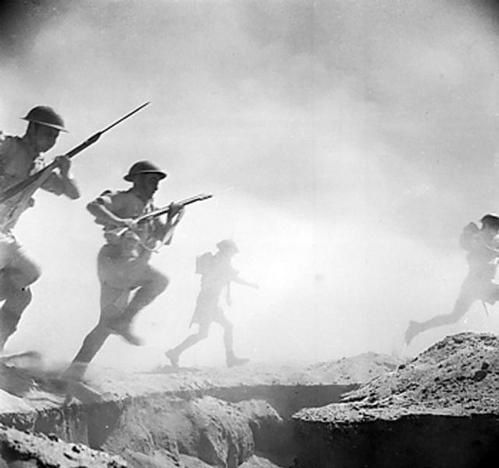

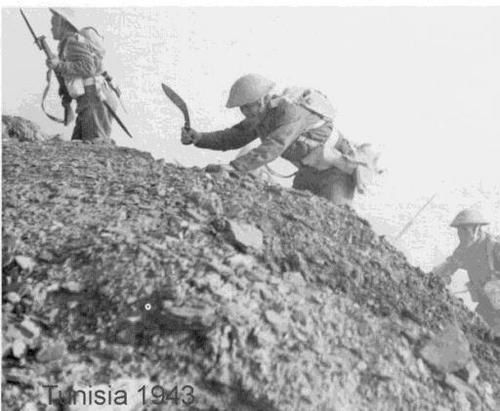

![]()

![]()
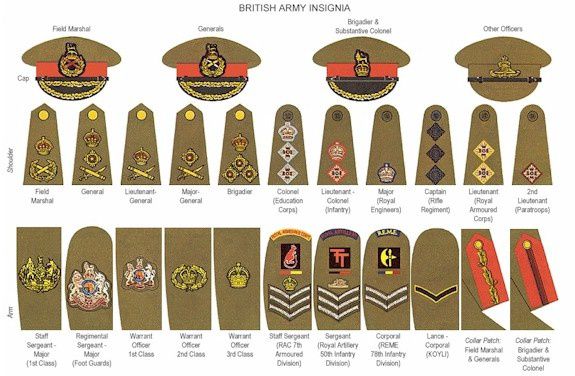
![]()
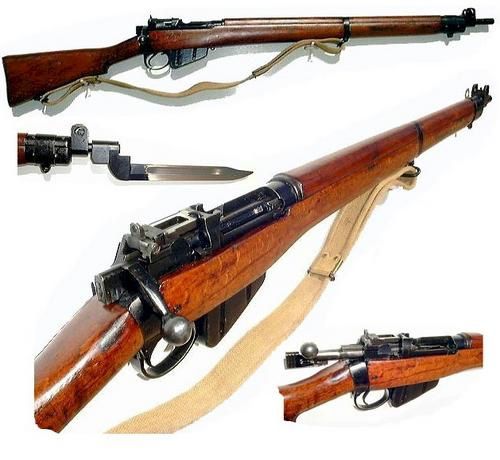
The Lee-Enfield was, in various marks and models, the British Army's standard bolt-action, magazine-fed, repeating rifle for over 60 years from (officially) 1895 until 1957, although it remained in British service well into the early 1960s and is still found in service in the armed forces of some Commonwealth nations. In its many versions, it was the standard army service rifle for the first half of the 20th century, and was adopted by Britain's colonies and Commonwealth allies, including India, Australia, New Zealand, and Canada.
By the late 1930s the need for new rifles grew, and the Rifle, No. 4 Mk I was first issued in 1939 but not officially adopted intil 1941. The No. 4 action was similar to the Mk VI but lighter, stronger, and most importantly, easier to mass-produce. Unlike the SMLE, the No 4 Lee-Enfield barrel protruded from the end of the forestock. The No. 4 rifle was considerably heavier than the No. 1 Mk. III, largely due to its heavier barrel, and a new bayonet was designed to go with the rifle- a spike bayonet (which was essentially a steel rod with a sharp point), and was nicknamed "pigsticker" by soldiers. Towards the end of WWII, a bladed bayonet was developed and issued for the No 4 rifle, using the same mount as the spike bayonet.
During the course of World War II, the No. 4 rifle was further simplified for mass-production with the creation of the No. 4 Mk I* in 1942which saw the bolt release catch removed in favour of a more simplified notch on the bolt track of rifle's receiver. It was produced only in North America, with Long Branch Arsenal in Canada and Savage-Stevens Firearms in the USA producing the No. 4 Mk I* rifle from their respective factories. On the other hand, the No.4 Mk I rifle was primarily produced in the United Kingdom.
| Lee-Enfield Mk .1 | No.4 Mk.1 |
| Caliber | .303 British (7.7x56mm R) |
| Action | manually operated, rotating bolt |
| Overall length | 1132 mm |
| Barrel length | 640 mm |
| Weight | 3.96 kg |
| Magazine capacity | 10 rounds in detachable box magazine |
Models/marks of Lee-Enfield Rifle and service periods
| Magazine Lee-Enfield | 1895–1926 |
| Charger Loading Lee-Enfield | 1906–1926 |
| Short Magazine Lee-Enfield Mk I | 1904–1926 |
| Short Magazine Lee-Enfield Mk II | 1906–1927 |
| Short Magazine Lee-Enfield Mk III/III | 1907–Present |
| Short Magazine Lee-Enfield Mk V | 1922–1924 (Trials Only 20,000) |
| Rifle No. 4 Mk I * | 1941–Present |
| Rifle No. 4 Mk I | 1942–Present |
| Rifle No 5 Mk I "Jungle Carbine" | 1944–Present |
| Rifle No. 4 Mk 2 | 1949–Present |
| Rifle 7.62mm 2A | 1964–Present |
| Rifle 7.62mm 2A1 | 1965-Present |
![]()
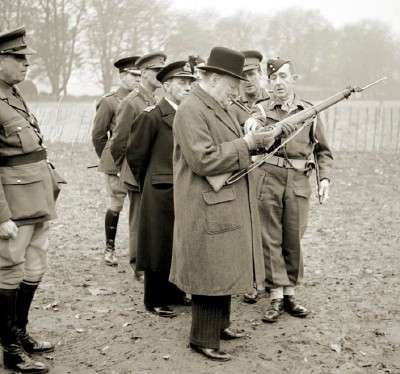 Sir Winston Churchill
Sir Winston Churchill
![]()
RARE COLOR FILM : NORTH AFRICA : PART 1 1942
RARE COLOR FILM : NORTH AFRICA : PART 2 1942-1943
RARE COLOR FILM:NORTH AFRICA:PART 3:1943





















/idata%2F0396584%2FKOREA%2F71910_korea_MIA1_800.JPG)
/idata%2F0396584%2FU.S.ARMY-POST-WW2%2Fphot4901a.jpg)
/idata%2F0396584%2FDRAWINGS-UNIFORMS-WW2%2F30-451-09b-2.jpg)
/idata%2F0396584%2FP-40%2F44FS000.jpg)
/idata%2F0396584%2FGERMAN-U-BOAT%2FBundesarchiv_Bild_101II-MW-1031-28-_Lorient-_U-31.jpg)
/idata%2F0396584%2FSOVIET-ARMY-WW2%2F1.jpg)





